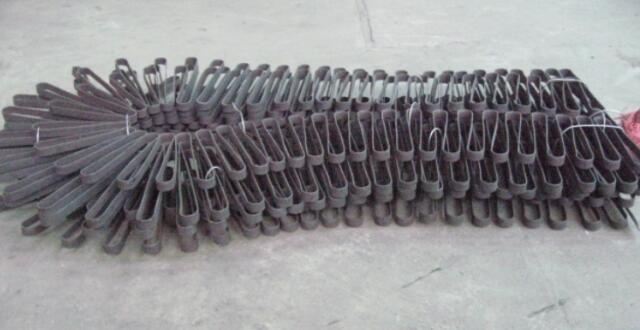Heat Treatment Furnace Resistance Wire Heating Element Daily Maintenance And Failure Analysis
The quality of daily operation and maintenance has a great influence on the service life of the resistance band, and should be paid enough attention to:
1. Operation and application
1.1 Prohibit long-term over-temperature and overload use during operation, and do not allow wet workpieces to be loaded into the furnace;
1.2 It is not allowed to open the furnace door for a long time after the furnace is heated up, and when the furnace temperature is higher than 400 ℃, it must not be rapidly cooled;
1.3 It is strictly forbidden to discharge the material when the power is turned on, pay attention not to touch the resistance belt when loading and discharging;
1.4 When the furnace is working, in order to prevent the resistance strip from being burned due to the failure of the control switch, you should always pay attention to whether the traffic lights on the control panel are normal;
1.5 Pay attention to the working conditions of the instrument at any time. When the furnace temperature and the indication of the instrument are found to be abnormal, the power supply must be cut off, and the analysis and treatment must be carried out in time;
2. Maintenance
2.1 The iron oxide scale in the furnace must be cleaned with brushes and brooms frequently to prevent short circuit on the resistance band, generally not less than once a month;
2.2 The screw grid leading out the terminal rod clip is prone to oxidative loosening due to thermal expansion and contraction and creep elongation when heating and shutting down the furnace, and should be checked and tightened regularly:
2.3 The hole of the lead-out rod should be blocked tightly to prevent the lead-out rod from being oxidized and peeled off, resulting in poor contact between the lead-out rod and the clip and burn out.

3. Analysis and elimination of common faults
3.1 In the process of use, the normal damage of the resistance band is mainly oxidation thinning and brittleness, but it is often caused by short circuit, over-burning or corrosion by the medium due to improper use.
3.2 When loading the workpiece, the resistance belt is attacked or the stacking is not good, and the resistance belt is collapsed (be careful when loading, the workpiece should not hit the resistance belt, and the workpiece should be stacked firmly).
3.3 Misuse of other materials for partially repaired resistance strips, or inconsistencies in diameter and length (when repairing resistance strips, select resistance strips with resistance values or dimensions that are close to the original resistance strips).
3.4 When the temperature is high and the change of cold and heat is large, it is easy to cause the resistance belt to be oxidized and peeled (minimize the opening and closing of the furnace door and the number of charging, and shorten the opening and closing and charging time of the furnace door).
3.5 The metal changes from a single-phase structure to a multi-phase structure, and the resistance increases (it should be replaced when the resistance exceeds a certain value).
3.6 Corrosion of various media causes a partial reduction in the section of the resistance band and an increase in resistance (it is strictly forbidden to put materials that are prone to harmful media into the furnace to prevent the components from contacting harmful media.
Controlled Atmosphere Pit Type Carburizing Production Line Equipment Vacuum Pressure Impregnating Varinish Process For Stator Heat-Treated Refractory Fibers Characteristics And Classification

Contact us
Your email address will not be published. Required fields are marked *